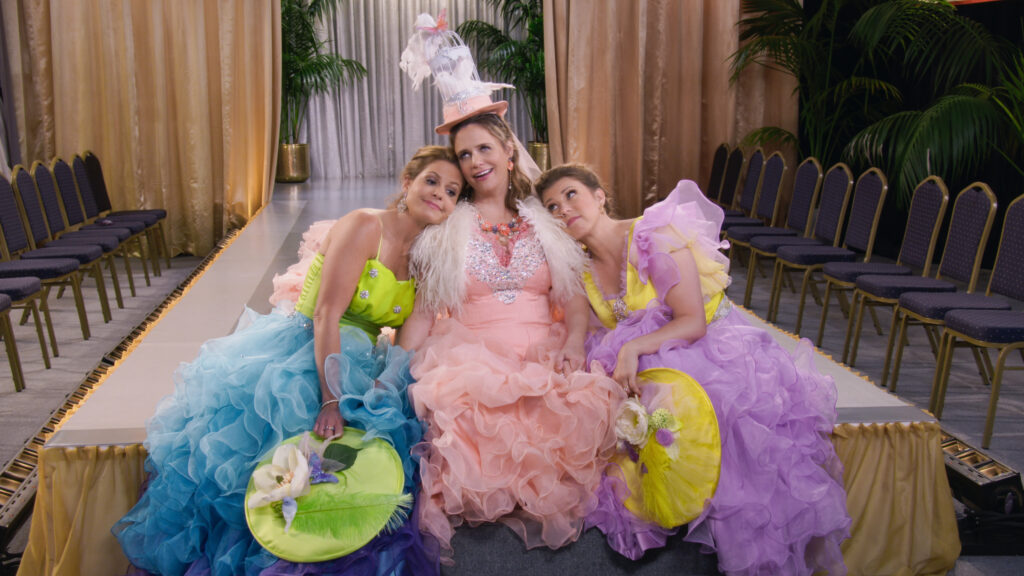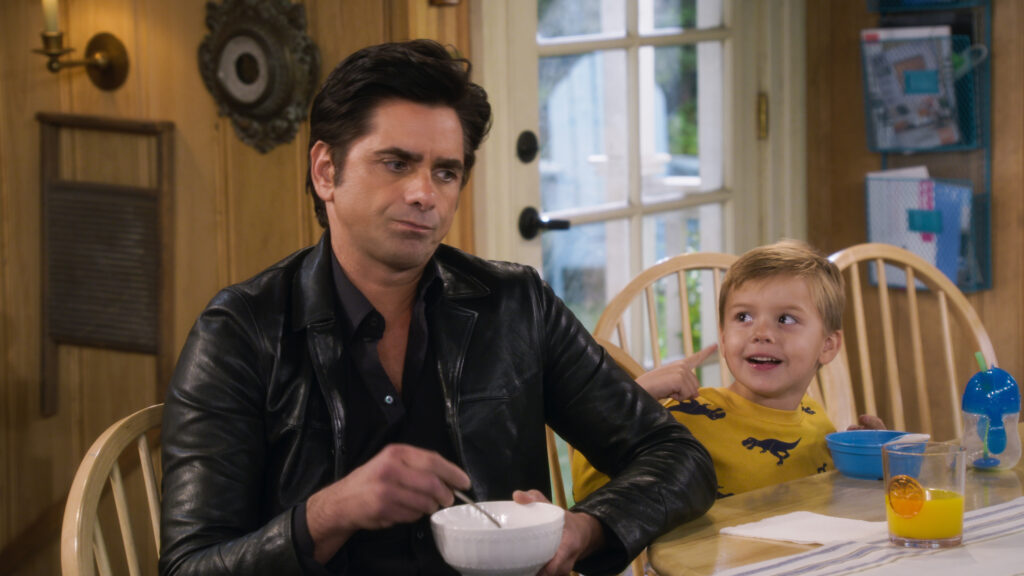
When Fuller House debuted on Netflix in 2016, fans of the beloved Full House sitcom eagerly embraced the opportunity to revisit the Tanner family and their familiar antics. However, despite its best efforts to rekindle the magic of its predecessor, Fuller House ultimately falls short, serving up a version of nostalgia that feels more like an empty promise than a heartwarming revival. Let’s dive deep into why Fuller House didn’t live up to expectations and how it missed the mark in its attempt to reignite the spark that Full House once captured.
The Dangers of Nostalgia: Can It Really Revive a Classic?
Nostalgia Alone Isn’t Enough
One of the major pitfalls Fuller House fell into was relying too heavily on nostalgia as its selling point. It’s easy to see why: Full House was a major cultural touchstone in the late ’80s and early ’90s, filled with wholesome family moments and lovable characters. So, the idea of reuniting the Tanner family seemed like a surefire way to please fans who grew up watching the original series.
But here’s the issue—nostalgia alone doesn’t make a good show. Fuller House tried to lean on this emotional connection, but without offering fresh, compelling storylines or growth for its characters, the show started to feel stale, rather than comforting. Instead of creating new and exciting narratives, the show often recycled plotlines and tropes from the original series, which, in the long run, proved disappointing.
Where’s the Heart?
In its prime, Full House had a genuine, heartwarming quality that made audiences tune in week after week. The relationships between the characters—whether it was the bond between Danny and his daughters or the love between Uncle Jesse and Aunt Becky—felt real and grounded, despite the often over-the-top comedic antics.
Fuller House tried to capture that same feeling, but without the magic that came with the original’s heartfelt storylines, the show often felt superficial. The jokes were recycled, the situations too predictable, and the characters—while still charming—seemed trapped in the past rather than evolving.
The Characters: Stuck in the Past
Lack of Character Development
One of the most significant shortcomings of Fuller House was the lack of character growth. While the original Full House allowed its characters to evolve over time, Fuller House seemed stuck in a loop. Many of the original characters—like DJ Tanner (Candace Cameron Bure) and Stephanie Tanner (Jodie Sweetin)—had grown up and experienced life changes, but the show didn’t allow them to move beyond their past selves.
Instead of diving into more mature, realistic challenges, Fuller House had the characters leaning heavily on their previous personas. DJ was still the responsible older sister, Stephanie was the quirky and fun-loving younger sibling, and Michelle (played by the Olsen twins in the original) was conspicuously absent, which left a noticeable gap. The lack of character evolution left fans feeling that the show was simply replaying the same formula, rather than expanding on it.
Repetitive Storylines and Jokes
The show often relied on nostalgia-driven jokes and predictable plots that were a tad too familiar. Sure, there were some moments of humor, but they were few and far between, often feeling like rehashed versions of the jokes from Full House. While it’s understandable that the show wanted to maintain the same comedic tone, it felt like a missed opportunity to grow beyond the basic gags and develop more original and thoughtful content.
The Supporting Cast: Forced Cameos and Unnecessary Returns
Bringing Back the Old Faces—But at What Cost?
Another area where Fuller House struggled was in its use of supporting characters and cameos. While bringing back fan favorites like Uncle Jesse (John Stamos), Joey (Dave Coulier), and Kimmy Gibbler (Andrea Barber) was a great way to keep the nostalgia flowing, the returns often felt forced. The show relied too heavily on these familiar faces to drive its storylines, rather than introducing fresh perspectives or allowing the new generation of characters to shine.
Many of the guest appearances from the old cast members felt like they were just checking off boxes, as if to prove to the audience that they were still part of the Full House legacy. Unfortunately, these appearances rarely brought anything new or meaningful to the table, and in many cases, they only highlighted how far the show had strayed from the charm of the original.
The Challenge of Living Up to the Original Cast
The other issue with these returnees was that they had a hard time living up to the original’s energy. The characters of Full House were beloved for their unique personalities and chemistry, but in Fuller House, these characters often felt more like shadows of their former selves. The spark that made Full House so special—its blend of warmth, humor, and heart—was often missing in Fuller House, leaving the return of these characters feeling more like a formality than a celebration.
Unnecessary Drama and Over-the-Top Plotlines
Too Much Drama, Not Enough Heart
One of the problems with Fuller House was its overuse of dramatic storylines. Rather than focusing on the heart of family dynamics, the show often indulged in soap-opera-like melodrama, which undermined the charm of the original. Issues like love triangles, overblown family conflicts, and overly dramatic situations began to overshadow the more grounded, realistic moments that Full House excelled at.
These plotlines, while entertaining at times, often felt out of place in a show that was once known for its lighthearted and heartfelt approach to family life. The drama was sometimes too exaggerated, making it hard for viewers to feel emotionally invested in the characters and their struggles.
The Struggle to Find Balance
The original Full House had a great balance between comedy, heart, and family-oriented storytelling. In contrast, Fuller House often struggled to strike that balance, leaning too heavily on slapstick humor or overly emotional moments that didn’t always work. As a result, the show couldn’t recapture the magic of its predecessor, leaving fans longing for something deeper than what was being offered.

The Decline in Viewership and Reception
Falling Ratings and Mixed Reviews
By the time Fuller House reached its final season in 2020, the excitement surrounding the show had waned. While it still had a dedicated fanbase, the show’s ratings were not as strong as they once were, and reviews from critics and viewers were mixed at best. Many pointed out that the series simply couldn’t live up to the legacy of Full House.
This decline in viewership and reception wasn’t entirely unexpected. Nostalgia can only take a show so far, and when the core of the series—its characters, its charm, and its ability to evolve—fails to keep pace, viewers start to lose interest. Fuller House was no exception to this rule.
Conclusion: A Missed Opportunity for Full House Fans
Fuller House had the potential to be an exciting revival of a classic sitcom, but it ultimately failed to recapture the magic of its predecessor. While it delivered plenty of nostalgic moments, it lacked the heart, growth, and fresh storytelling that made Full House so beloved. Instead of evolving with the times, Fuller House leaned too heavily on the past, offering fans a version of the Tanner family that felt stuck in time.
At the end of the day, Fuller House serves as a reminder that nostalgia can be a powerful tool, but it isn’t enough to carry a show. A truly successful revival needs to balance the past with the present, creating something that feels both familiar and new. Unfortunately, Fuller House missed the mark in this regard.
FAQs
-
Why did Fuller House struggle to live up to Full House?
- The show relied too heavily on nostalgia without evolving the characters or storylines, resulting in a series that felt stale and predictable.
-
What was the biggest issue with Fuller House’s characters?
- There was a lack of character development. While the characters were familiar, they didn’t grow or evolve in ways that kept the show fresh and engaging.
-
Why were the cameos from the original cast members problematic?
- The cameos felt forced, and instead of adding value to the storyline, they often highlighted the show’s reliance on nostalgia, which ultimately detracted from the show’s originality.
-
Was Fuller House successful in capturing the same balance as Full House?
- No, Fuller House often leaned too heavily on drama or slapstick humor, missing the balance of comedy and heart that made Full House so beloved.
